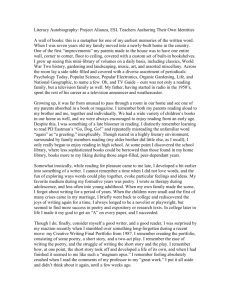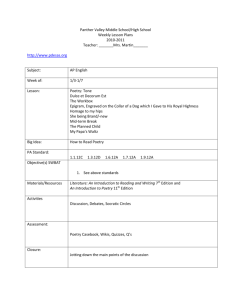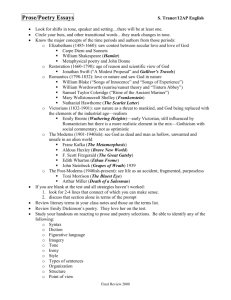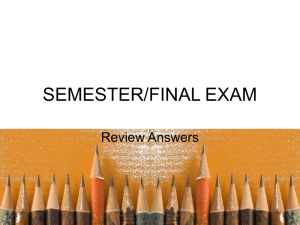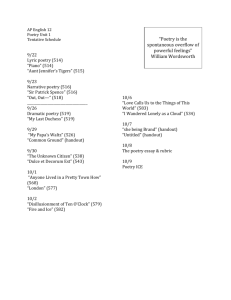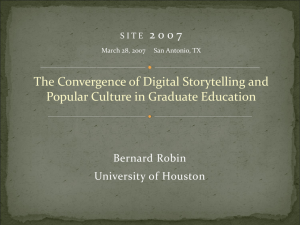Creative Language Rationale EDITED
advertisement
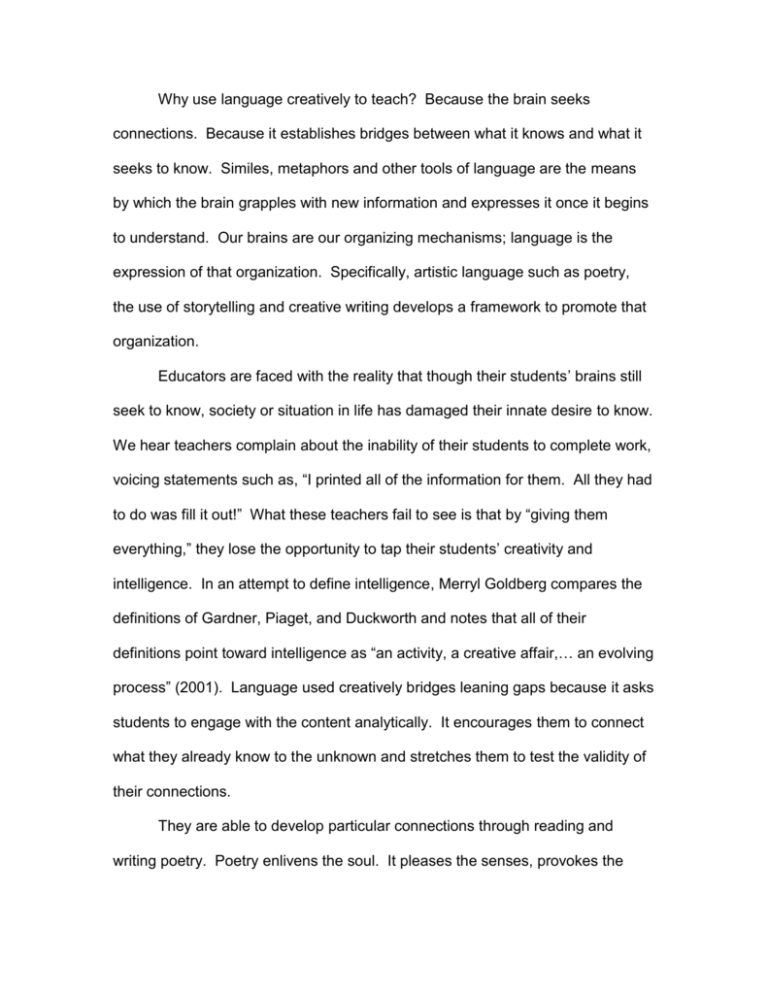
Why use language creatively to teach? Because the brain seeks connections. Because it establishes bridges between what it knows and what it seeks to know. Similes, metaphors and other tools of language are the means by which the brain grapples with new information and expresses it once it begins to understand. Our brains are our organizing mechanisms; language is the expression of that organization. Specifically, artistic language such as poetry, the use of storytelling and creative writing develops a framework to promote that organization. Educators are faced with the reality that though their students’ brains still seek to know, society or situation in life has damaged their innate desire to know. We hear teachers complain about the inability of their students to complete work, voicing statements such as, “I printed all of the information for them. All they had to do was fill it out!” What these teachers fail to see is that by “giving them everything,” they lose the opportunity to tap their students’ creativity and intelligence. In an attempt to define intelligence, Merryl Goldberg compares the definitions of Gardner, Piaget, and Duckworth and notes that all of their definitions point toward intelligence as “an activity, a creative affair,… an evolving process” (2001). Language used creatively bridges leaning gaps because it asks students to engage with the content analytically. It encourages them to connect what they already know to the unknown and stretches them to test the validity of their connections. They are able to develop particular connections through reading and writing poetry. Poetry enlivens the soul. It pleases the senses, provokes the reader, engages, stimulates, churns, dignifies, and clarifies all of the experiences of the human condition. Teaching students in this modern age requires an emotional context (***). Poetry is the bridging tool. Teachers do not need to struggle to make their students “see” this fact; instead they must understand and identify the emotional states of their students. In her article, The Arts and the Inner Lives of Teachers, Mary Clare Powell (1997) said that “Good teaching comes directly from the mind, heart, and spirit of an awake and growing human being” (p. 450). Once teachers recognize the emotional bridge that connects their curriculum with the students’ emotional states, there will be no limit to the subject matter that they will internalize. Poetry fills the gap between students and the world that they feel disconnected from. Poetry enlivens the soul because it is the sounding board of the soul. This sounding board in students must be tapped to make it flow. Students who grasp who they are and how they interact and contribute to their community stand a better chance for success in life. Another application of artistic language is storytelling. Storytelling is an “In” to understanding. Building a body of stories that students can make their own enables them to draw upon the knowledge and wisdom of their culture and other cultures. Storytelling bridges the gap between self and community, time periods, cultures, right and wrong, and consideration and action. It lets us know that we are not alone in the trials that occupy our existence. These stories are the layers that form our identities and comprise the foundation of our culture. Writing should be promoted in all subjects. Creative writing frees both teacher and student from the involved, skill driven process of analytical writing. Writing briefly on any subject matter tests knowledge, promotes creative thought, and establishes emotional contexts. “Writing not only helps students express their emotions in a constructive way but also assists students in retaining content” (Tate, 135). When teachers encourage students to write “what they know,” they do more than encourage creativity; they allow the students to expound upon their knowledge of the curriculum. Artistic language appeals to the mind, promotes creative thought, establishes connections, and engenders community. Teachers who embrace artistic language provide a gift to their students’ approach, understand, and participation in the world around them.

